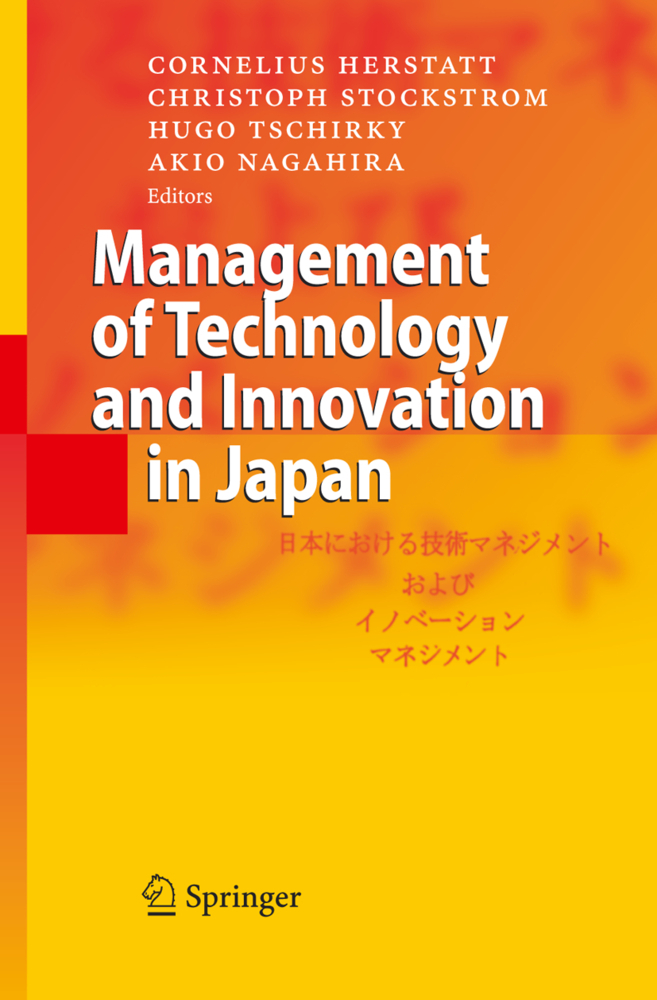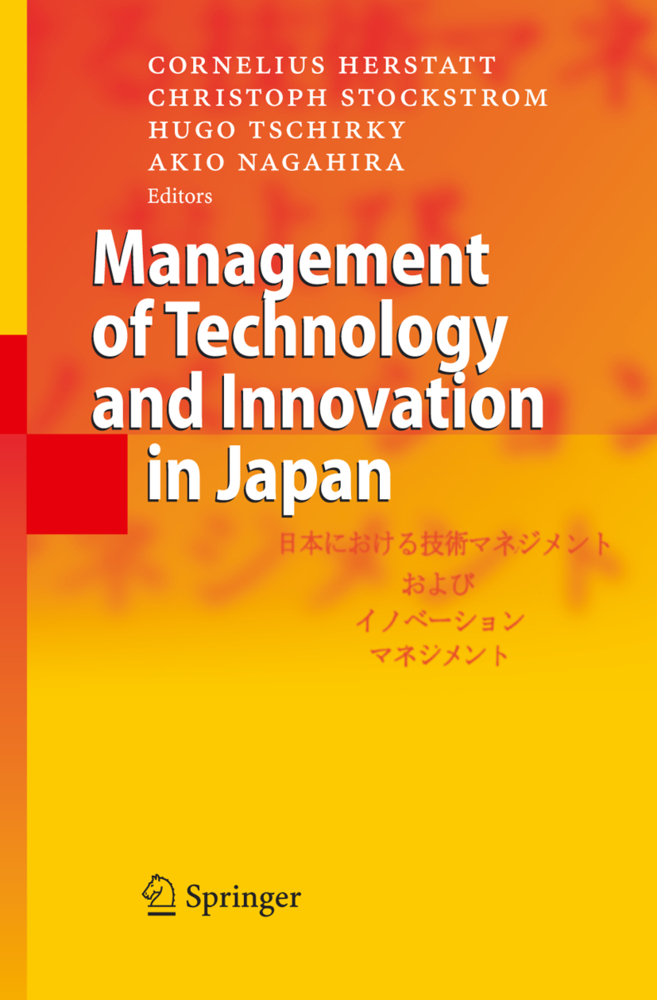Management of Technology and Innovation in Japan
What Makes this Book Unique? No crystal ball is required to safely predict, that in the future - even more than in the past - mastered innovativeness will be a primary criterion distinguishing s- cessful from unsuccessful companies. At the latest since Michael Porter's study on the competitiveness of nations, the same criterion holds even for the evaluation of entire countries and national economies. Despite the innumerable number of p- lications and recommendations on innovation, competitive innovativeness is still a rare competency. The latest publication of UNICE - the European Industry - ganization representing 20 million large, midsize and small companies - speaks a clear language: Europe qualifies to roughly 60% (70%) of the innovation strength of the US (Japan). The record unemployment in many EU countries does not c- tradict this message. A main reason may be given by the fact that becoming an innovative organi- tion means increased openness towards the new and more tolerance towards risks and failures, both challenging the inherently difficult management art of cultural change. Further, lacking innovativeness is often related to legal and fiscal barriers which rather hinder than foster innovative activities. Yet another reason to explain Europe's notorious innovation gap refers to insufficient financial R&D resources on the company as well as on the national level. As a result, for example, hi- ranking decisions on the level of the European Commission are taken to increase R&D expenditures in the European Union from roughly 2% to 3% of GNP.
Invisible Dimensions of Innovation: Strategy for De-commoditization in the Japanese Electronics Industry
The Customer System and New Product Development: The Material Supplier's Strategy in Japan
The Japanese Know-Who Based Model of Innovation Management - Reducing Risk at High Speed
The Domestic Shaping of Japanese Innovations
Exploiting "Interface Capabilities" in Overseas Markets: Lessons from Japanese Mobile Phone Handset Manufacturers in the US
"Fuzzy Front End" Practices in Innovating Japanese Companies
Implementing Process Innovation - The Case of the Toyota Production System
Reorientation in Product Development for Multiproject Management: The Toyota Case
Suppliers' Involvement in New Product Development in the Japanese Auto Industry - A Case Study from a Product Architecture Perspective
NPD-Process and Planning in Japanese Engineering Companies - Findings from an Interview Research
Japanese New Product Advantage: A Comparative Examination
Differences in the Internationalization of Industrial R&D in the Triad
Global Innovation and Knowledge Flows in Japanese and European Corporations
Reducing Project Related Uncertainty in the "Fuzzy Front End" of Innovation - A Comparison of German and Japanese Product Innovation Projects
From Practice: IP Management in Japanese Companies
MoT: From Academia to Management Practice - The MoT Implementation Case in a Traditional Japanese Company.
Designing the Product Architecture for High Appropriability: The Case of Canon
Case Study Shimano: Market Creation Through Component IntegrationInvisible Dimensions of Innovation: Strategy for De-commoditization in the Japanese Electronics Industry
The Customer System and New Product Development: The Material Supplier's Strategy in Japan
The Japanese Know-Who Based Model of Innovation Management - Reducing Risk at High Speed
The Domestic Shaping of Japanese Innovations
Exploiting "Interface Capabilities" in Overseas Markets: Lessons from Japanese Mobile Phone Handset Manufacturers in the US
"Fuzzy Front End" Practices in Innovating Japanese Companies
Implementing Process Innovation - The Case of the Toyota Production System
Reorientation in Product Development for Multiproject Management: The Toyota Case
Suppliers' Involvement in New Product Development in the Japanese Auto Industry - A Case Study from a Product Architecture Perspective
NPD-Process and Planning in Japanese Engineering Companies - Findings from an Interview Research
Japanese New Product Advantage: A Comparative Examination
Differences in the Internationalization of Industrial R&D in the Triad
Global Innovation and Knowledge Flows in Japanese and European Corporations
Reducing Project Related Uncertainty in the "Fuzzy Front End" of Innovation - A Comparison of German and Japanese Product Innovation Projects
From Practice: IP Management in Japanese Companies
MoT: From Academia to Management Practice - The MoT Implementation Case in a Traditional Japanese Company.
Herstatt, Cornelius
Stockstrom, Christoph
Tschirky, Hugo
Nagahira, Akio
| ISBN | 978-3-540-25326-6 |
|---|---|
| Artikelnummer | 9783540253266 |
| Medientyp | Buch |
| Copyrightjahr | 2005 |
| Verlag | Springer, Berlin |
| Umfang | XXIII, 406 Seiten |
| Abbildungen | XXIII, 406 p. |
| Sprache | Englisch |











